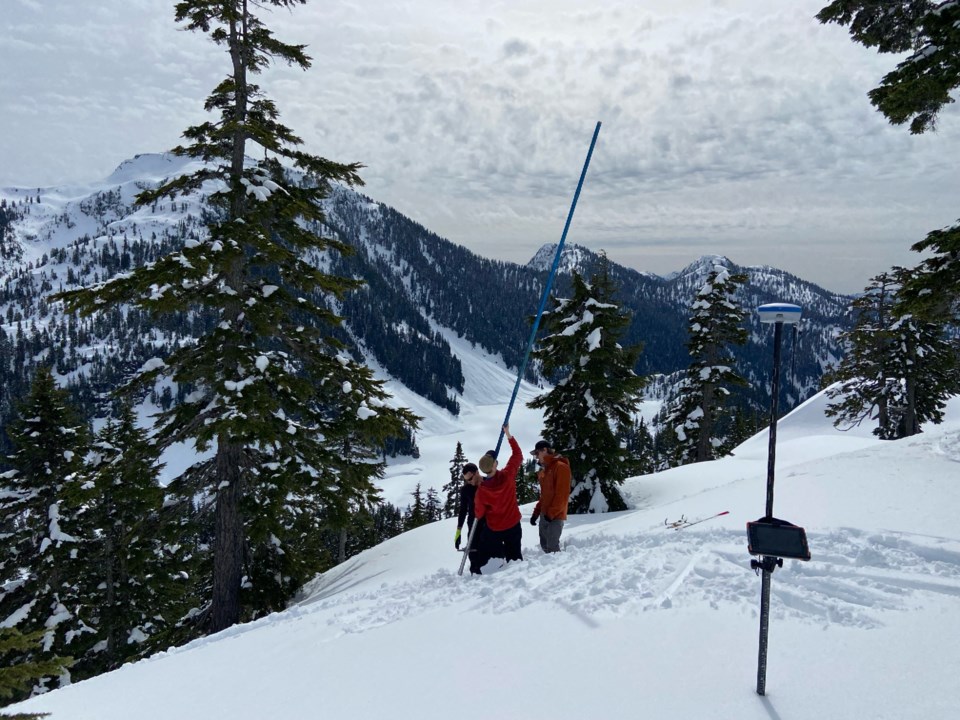You may have to wait a few weeks to get your garden started, but the North Shore’s unseasonably cool temperatures are good news for the region’s water supply.
The snowpack in the North Shore mountains that feeds into Metro Vancouver’s three main water reservoirs is sitting just above average for this time of year, said Peter Marshall, a field hydrologist for Metro’s watersheds and environment department.
“We’re sitting at a good position for the rest of the summer,” he said.
Snowpack levels were above average at the beginning of the winter. But then a dry spell hit in January and February where not much snow fell. Most recently, late season snowfall has replenished the snowpack again, said Marshall.
Metro hydrologists take measurements at five different sites in the Capilano, Seymour and Coquitlam watersheds monthly throughout the winter. Between April and June, the frequency increases, to once every two weeks, said Marshall.
In addition, four automated weather stations in the upper elevations supply information about snow levels between 900 and 1,200 metres of elevation.
Water supply managers have been keeping close tabs on the snowpack levels in local mountains since the early 1900s, said Marshall.
The basic method – which involves sampling snow depth and density with specialized snow tubes to assess the amount of water storage – hasn’t changed much in the past 100 years.
More recently, hydrologists have been piloting a more technological solution, involving shooting laser sensors from an aircraft to measure the snow depth. The advantage of that system is it can give a more accurate picture of the overall snowpack, rather than relying on representative sample sites, said Marshall.
“It’s really important for us to be able to measure the snowpack in its entirety,” he said. “We’re in the research and development phase of this technology.”
Snowpack levels vary considerably each year. But hydrologists have seen significant changes at the lower elevations, including a shrinking of the snowpack at sampling sites around 900 metres in elevation.
That’s a bigger band representing more water than snowpack further up the mountain, said Marshall, so “as it shrinks, we’re losing quite a bit.”
The snowpack, said Marshall, is like a “fourth reservoir” for the Metro Vancouver region, in addition to the Capilano, Seymour and Coquitlam reservoirs.
Rain is still the major source of water to keep reservoirs full. But the snowpack provides an important buffer. “It keeps our reservoirs filled up for the really dry season,” he said.
A cool spring – and gradual release of that snowpack later this summer – is “excellent news for our drinking water,” he said.



